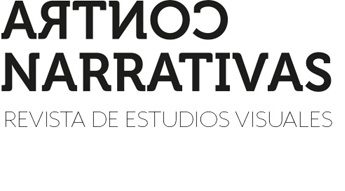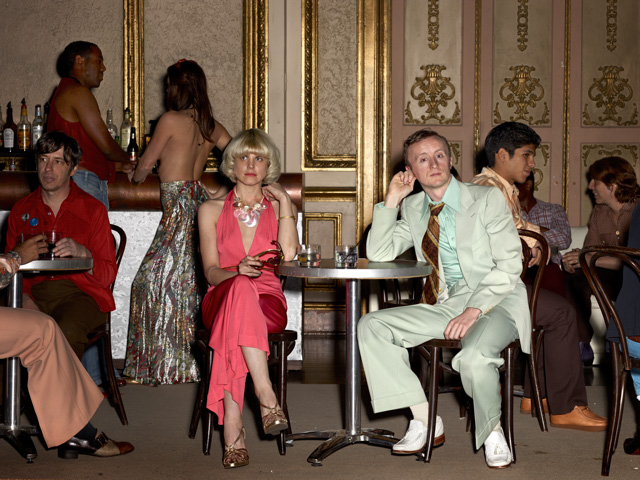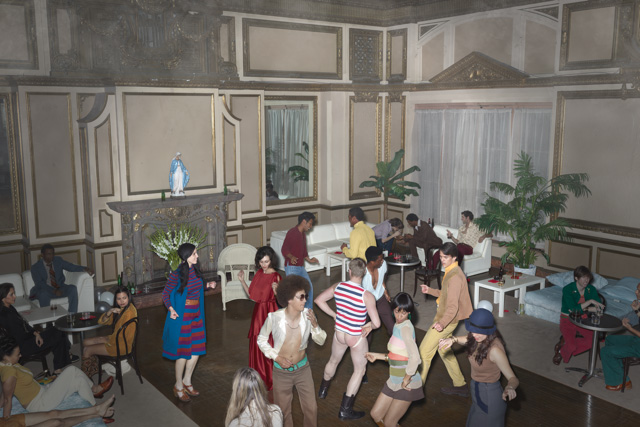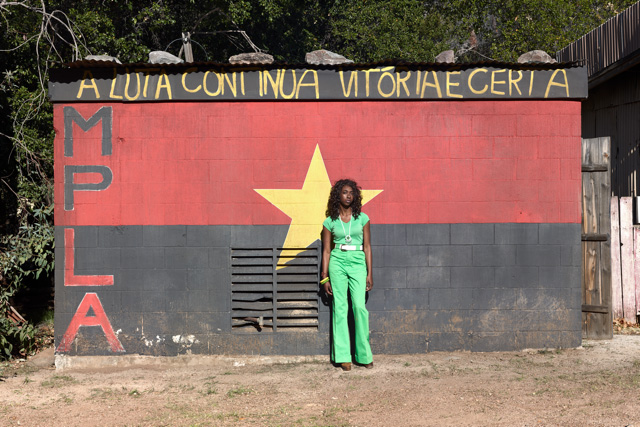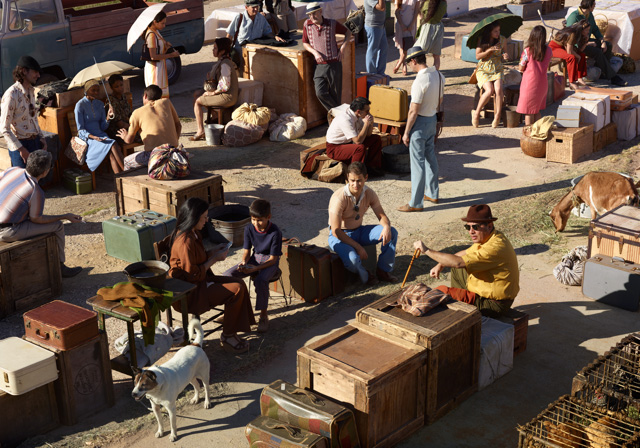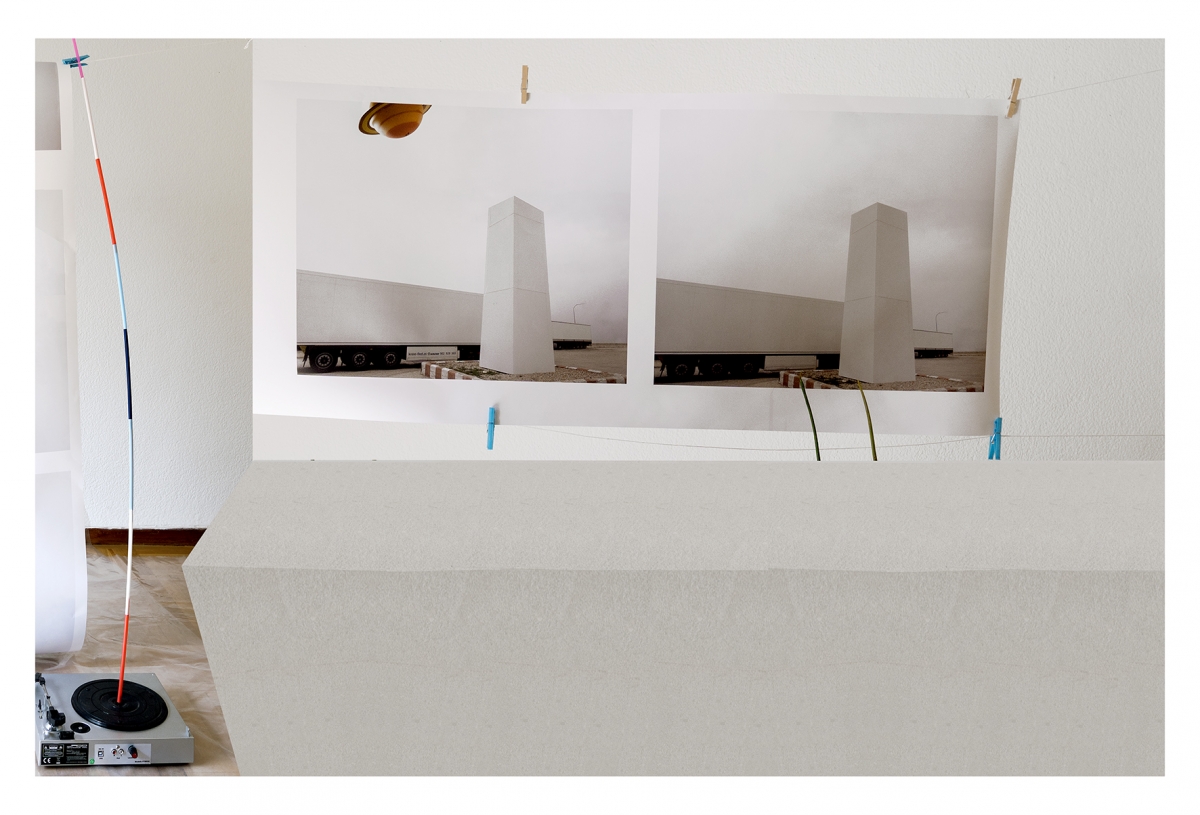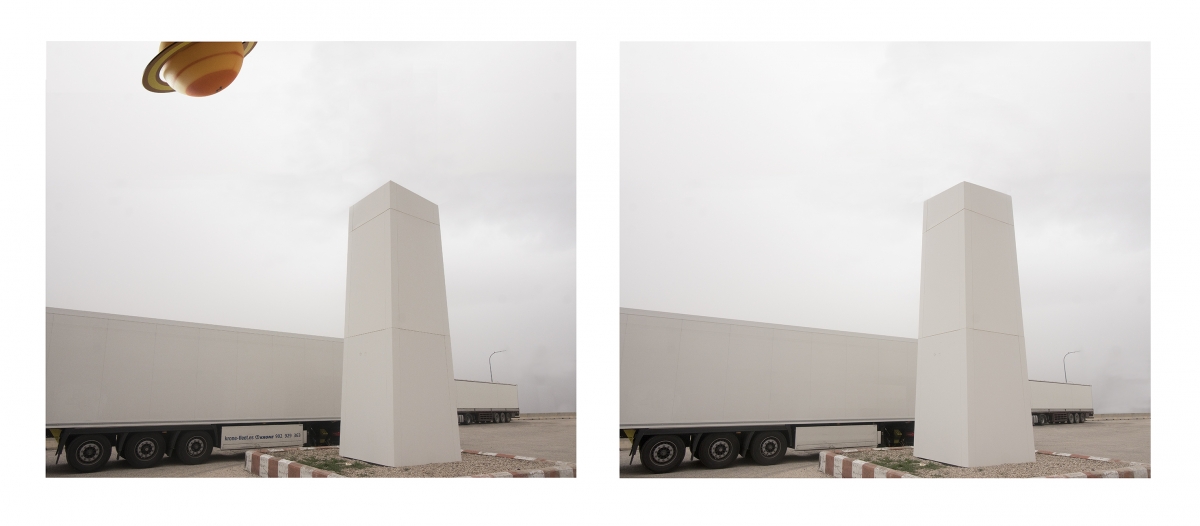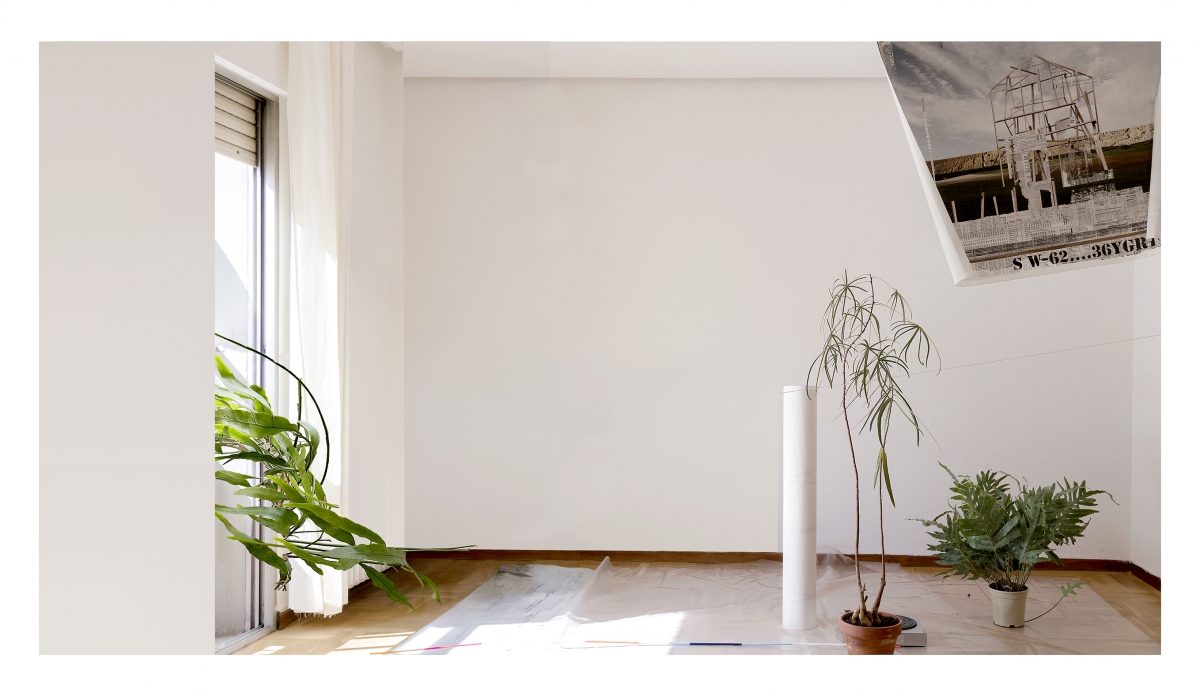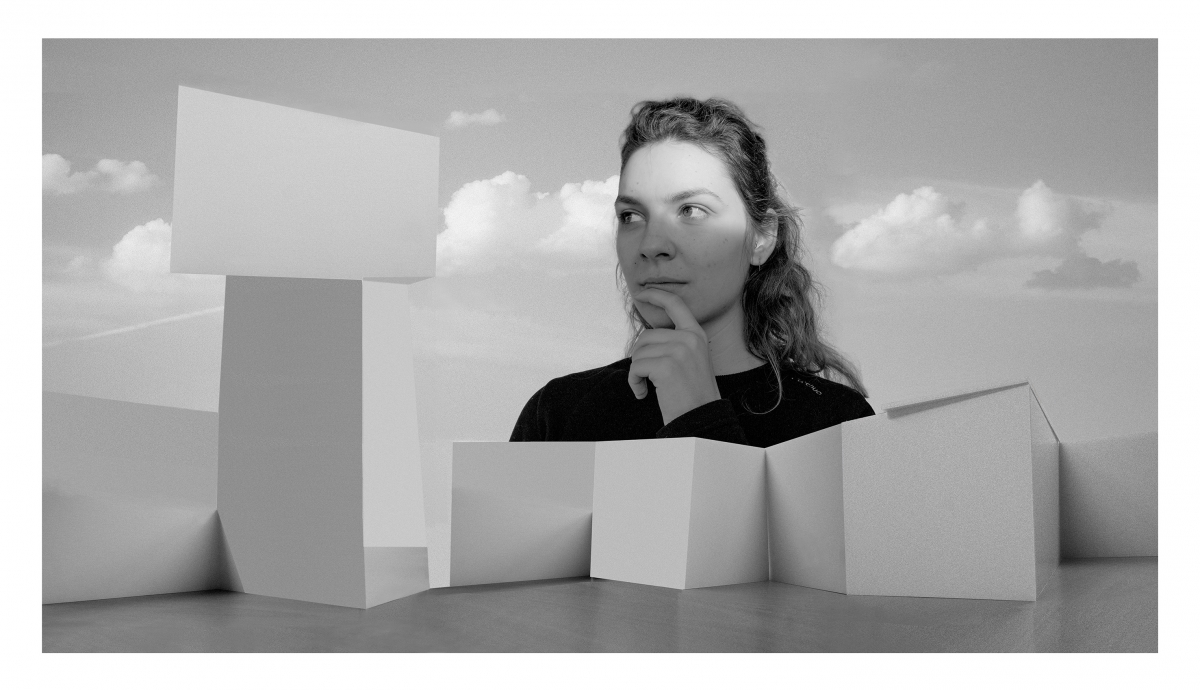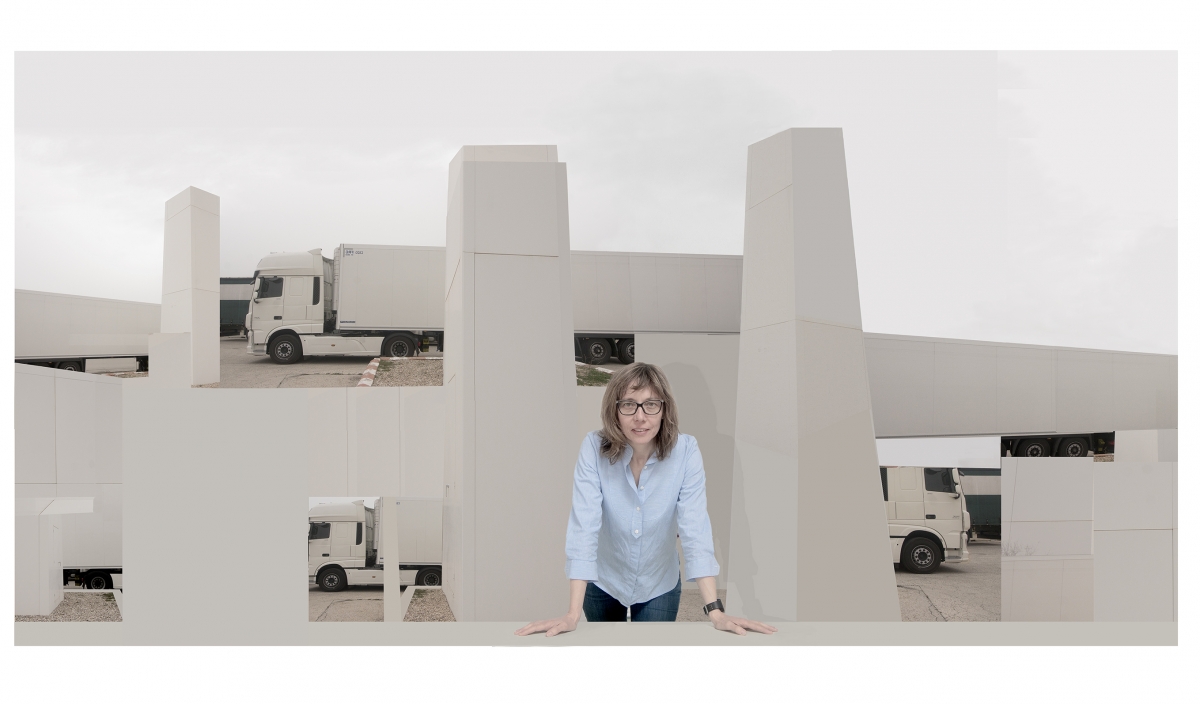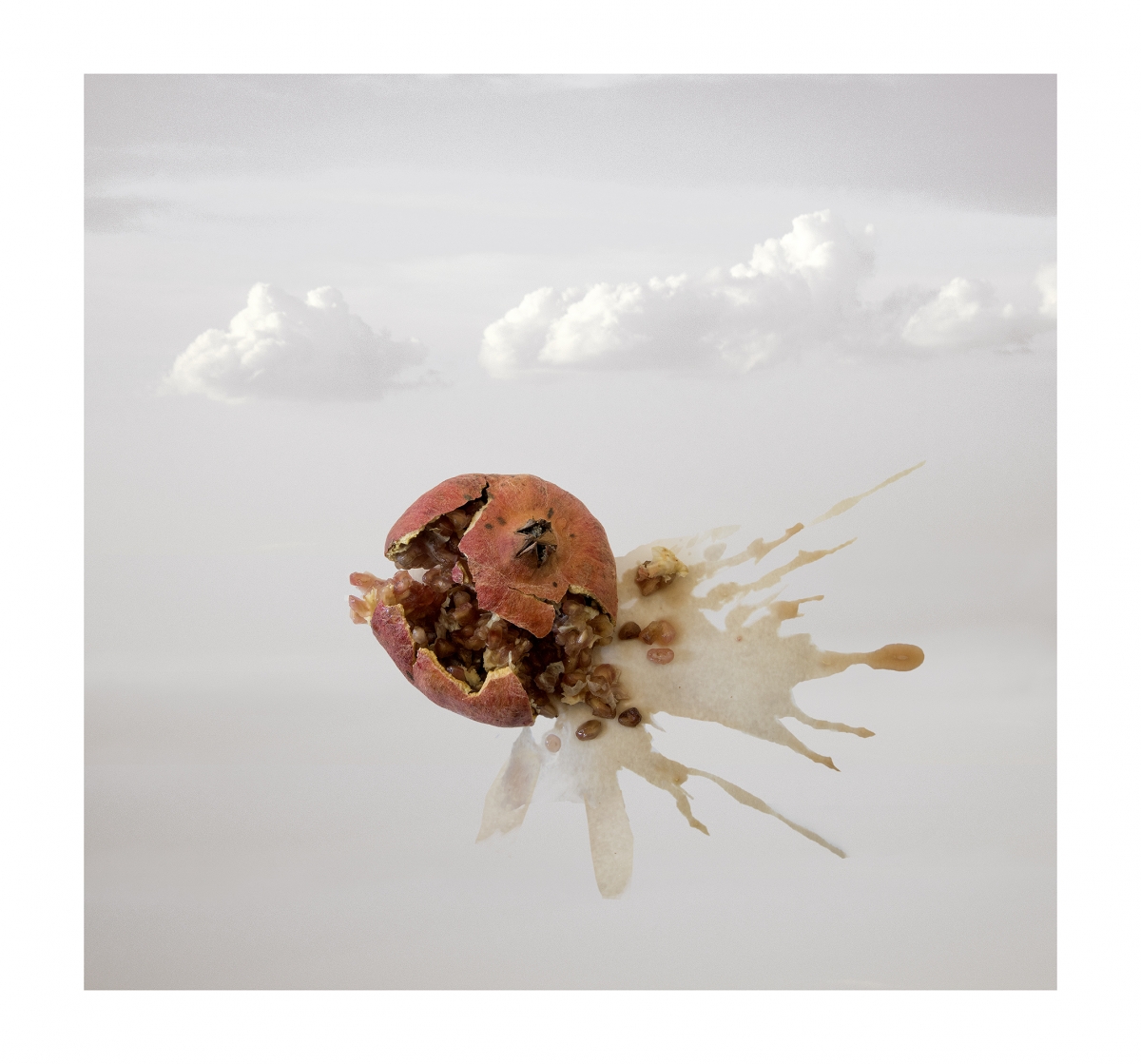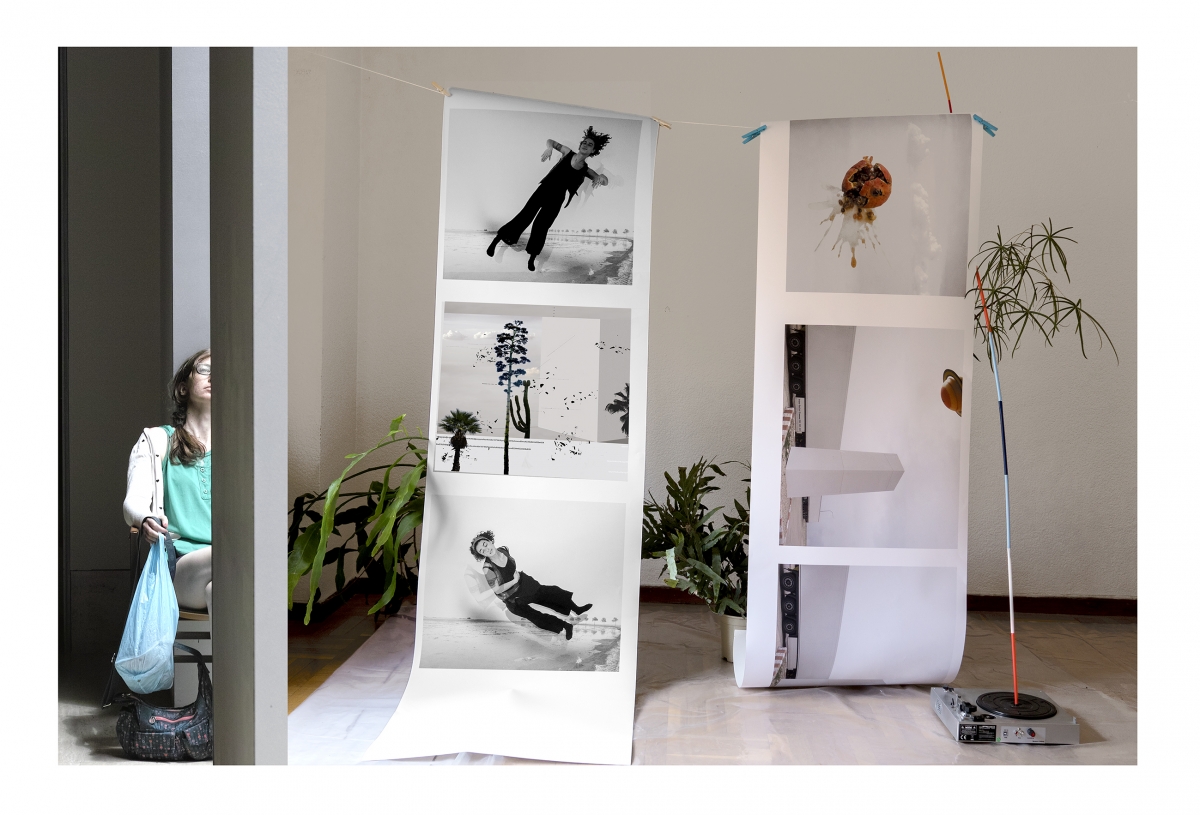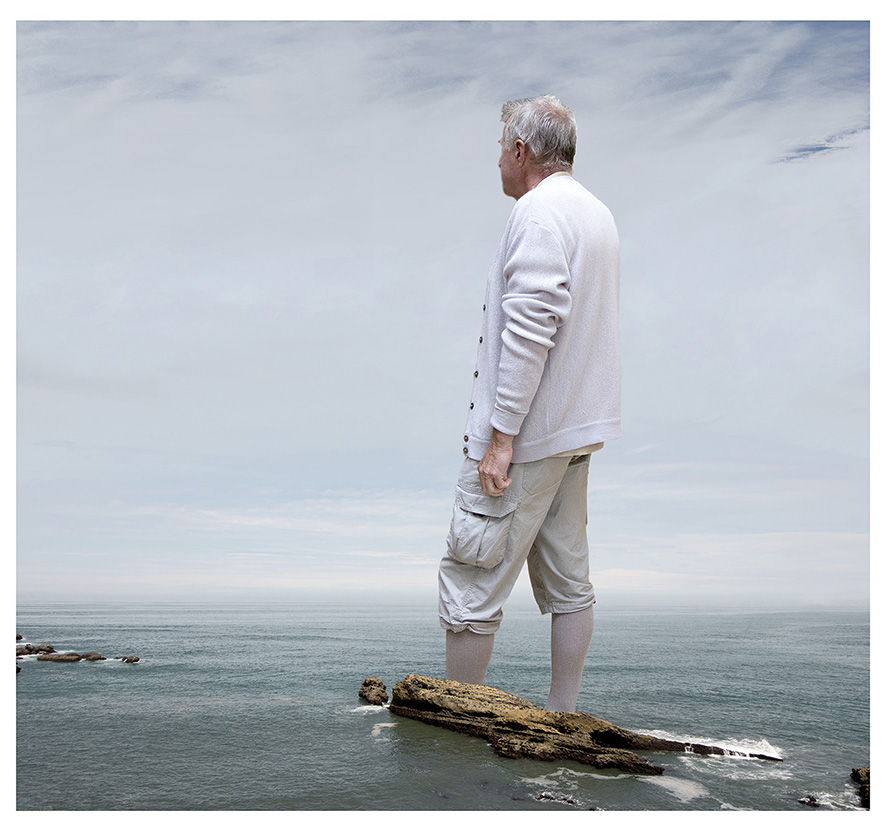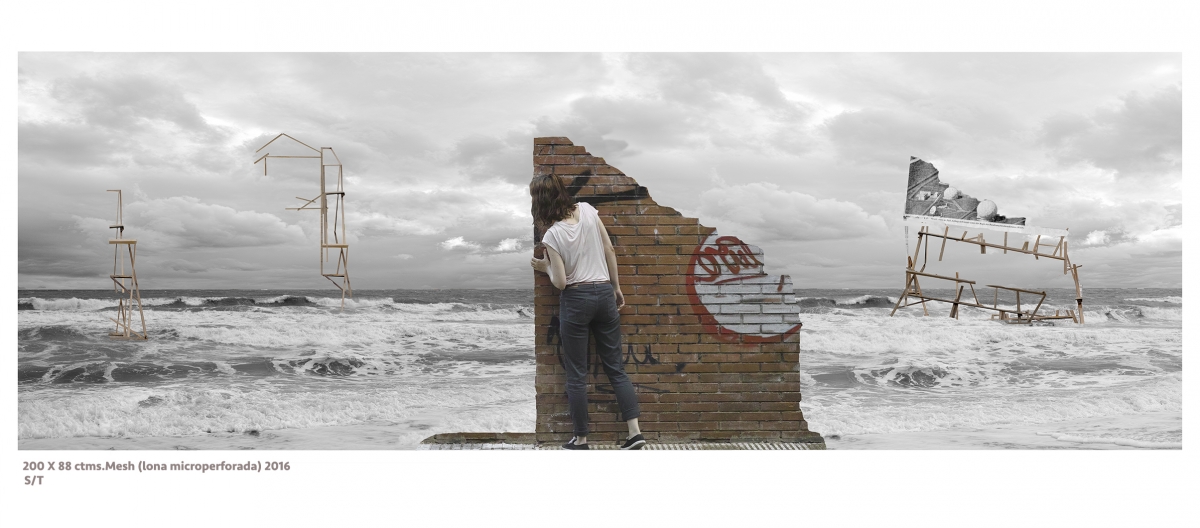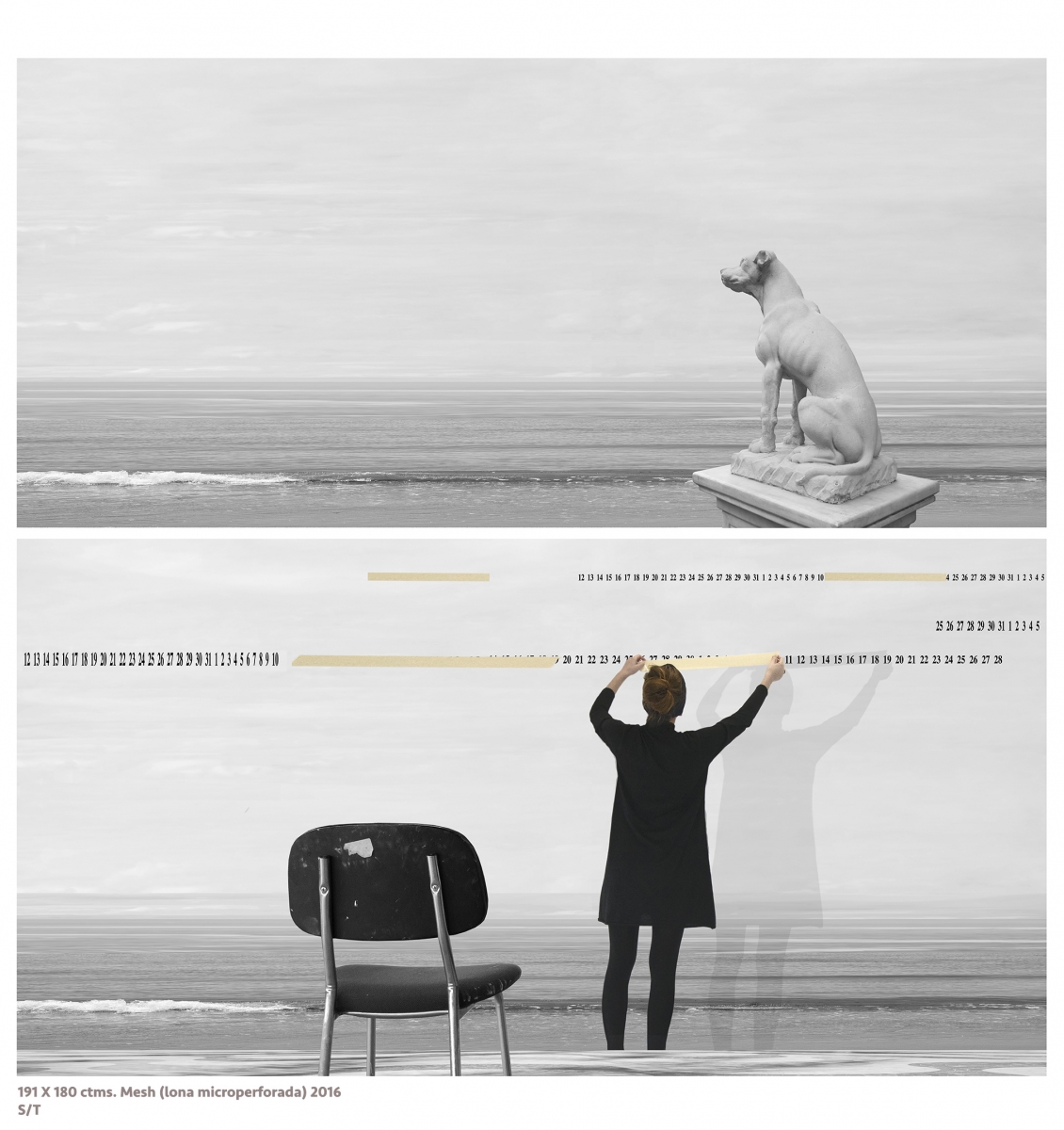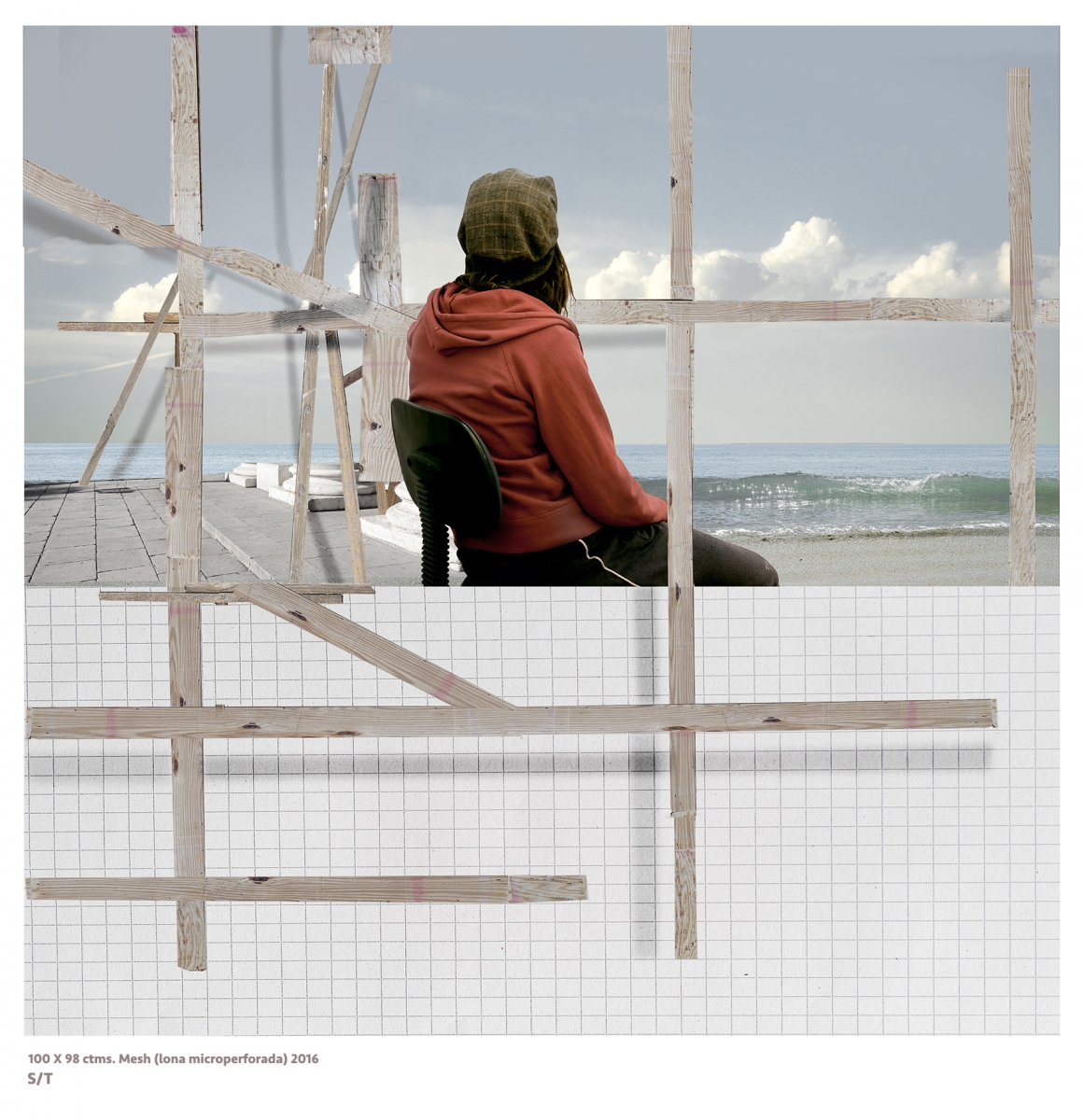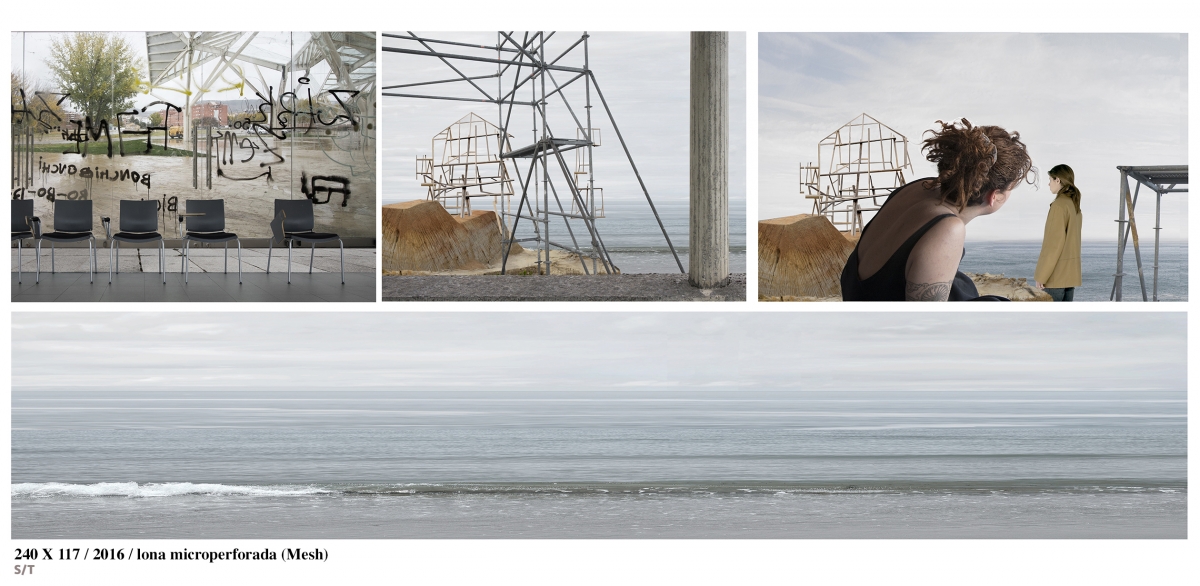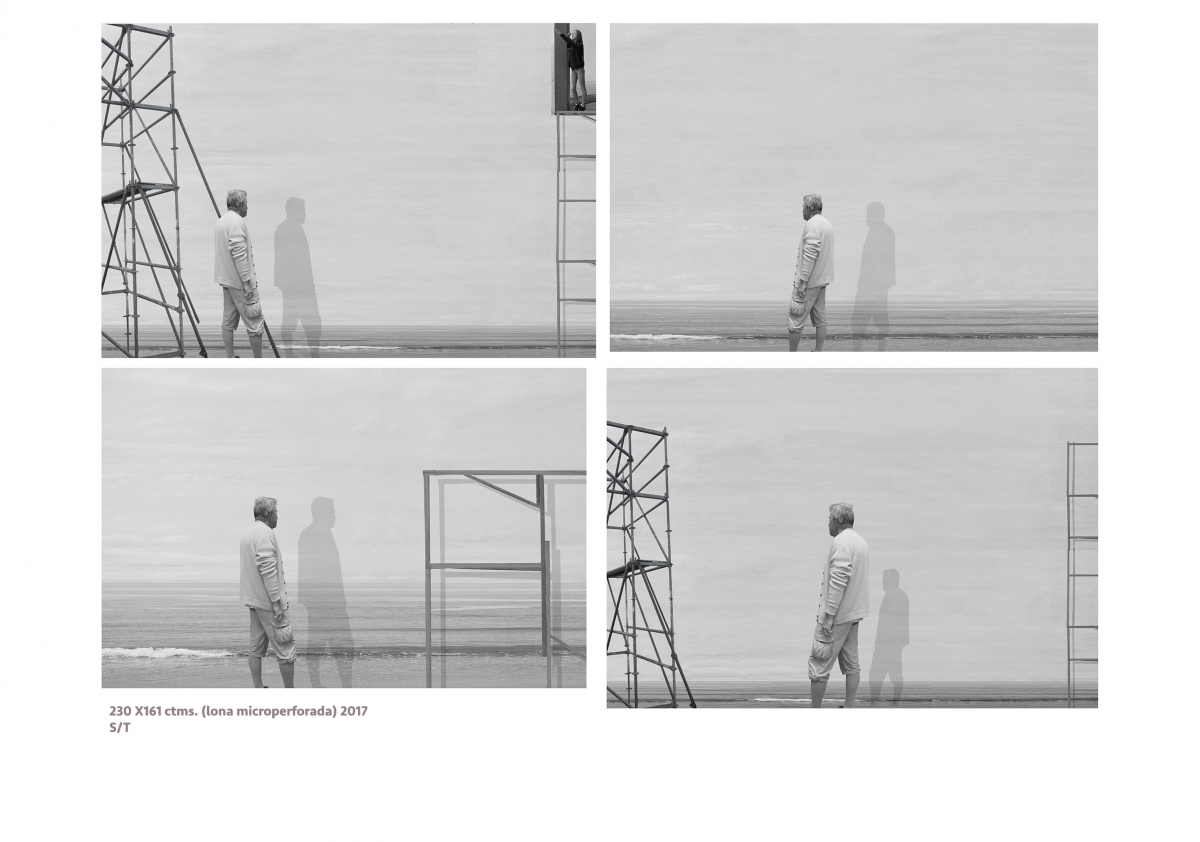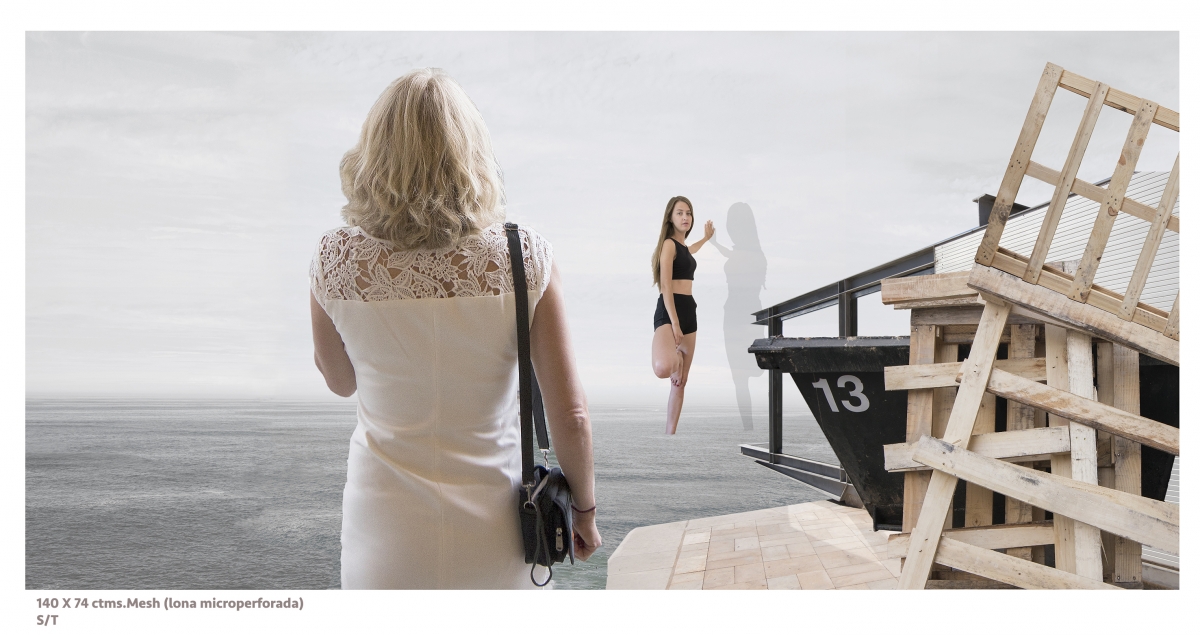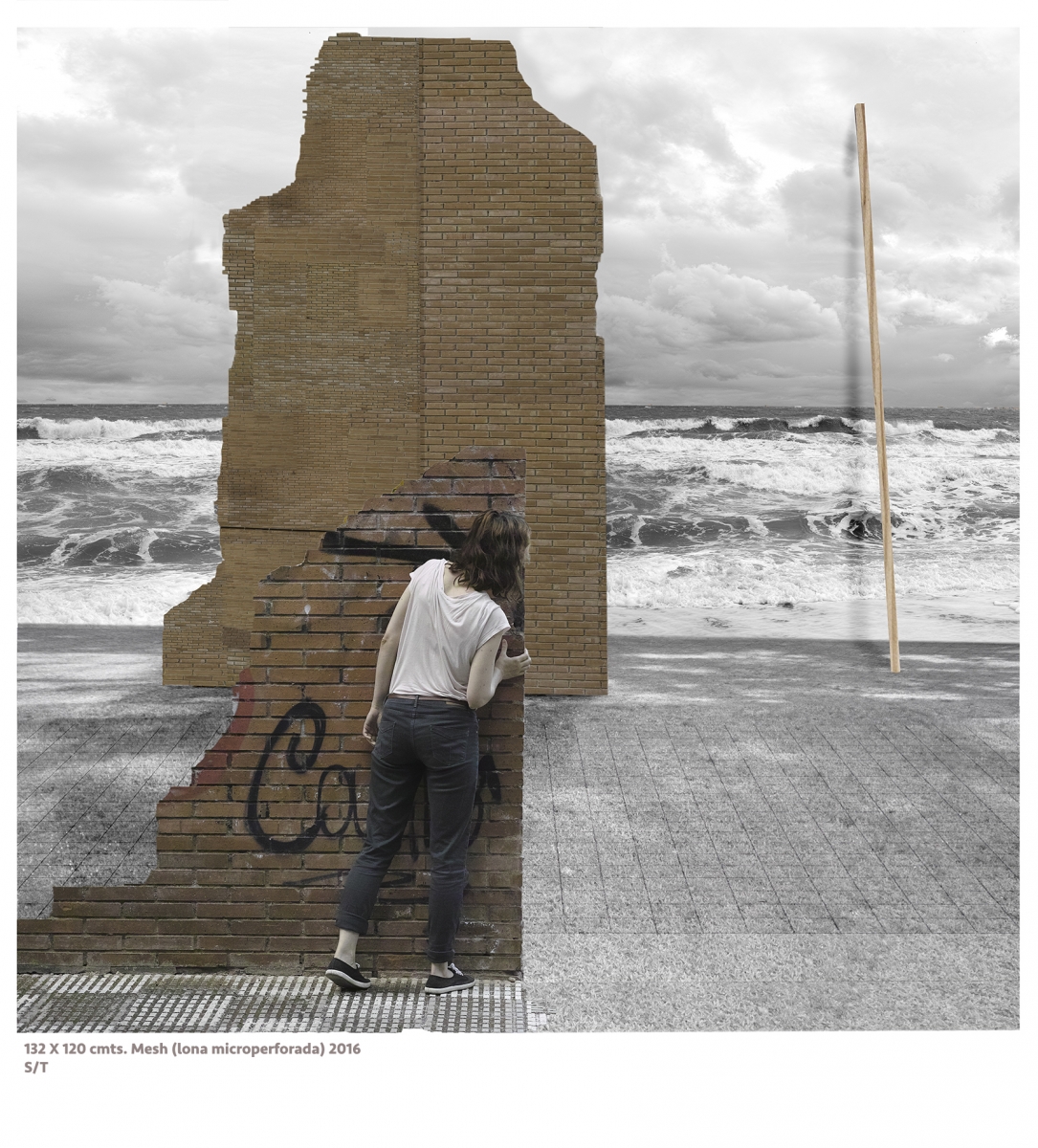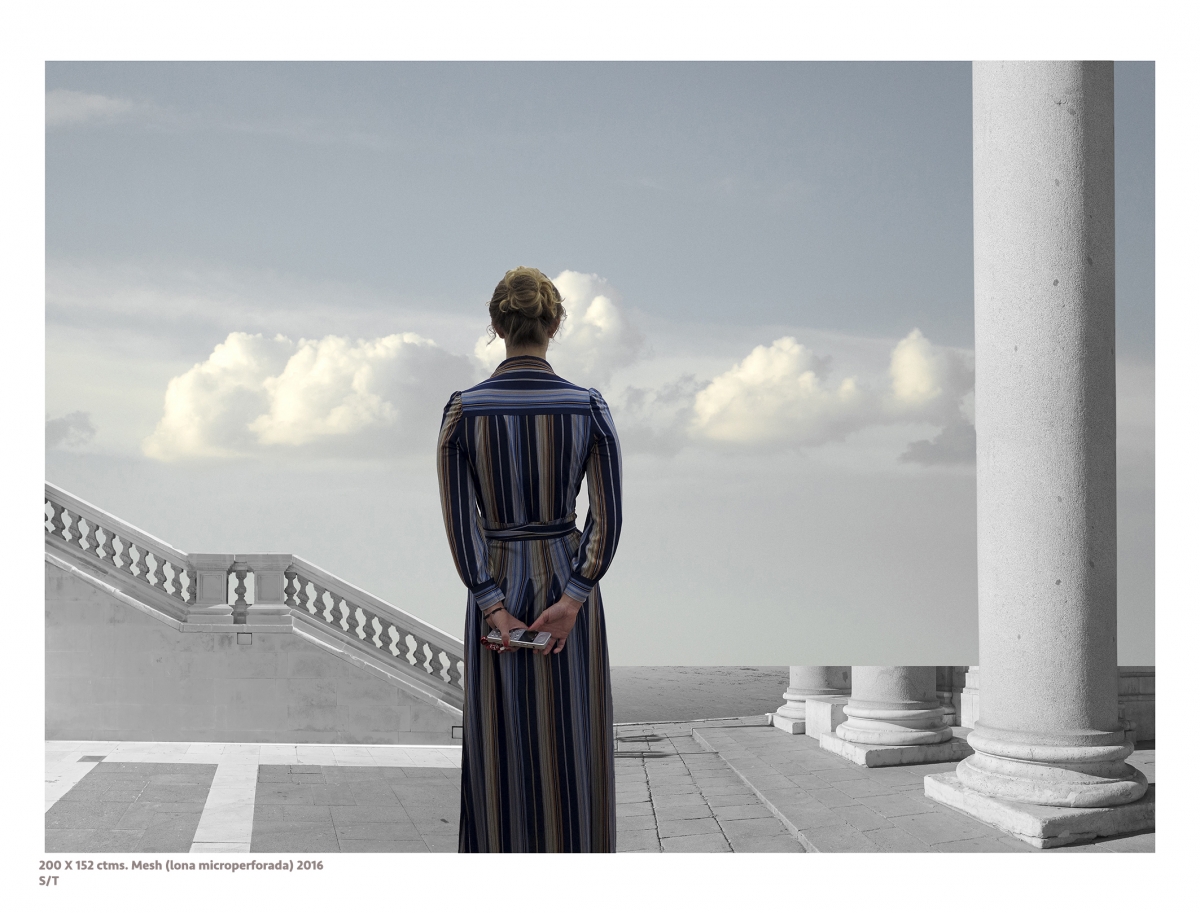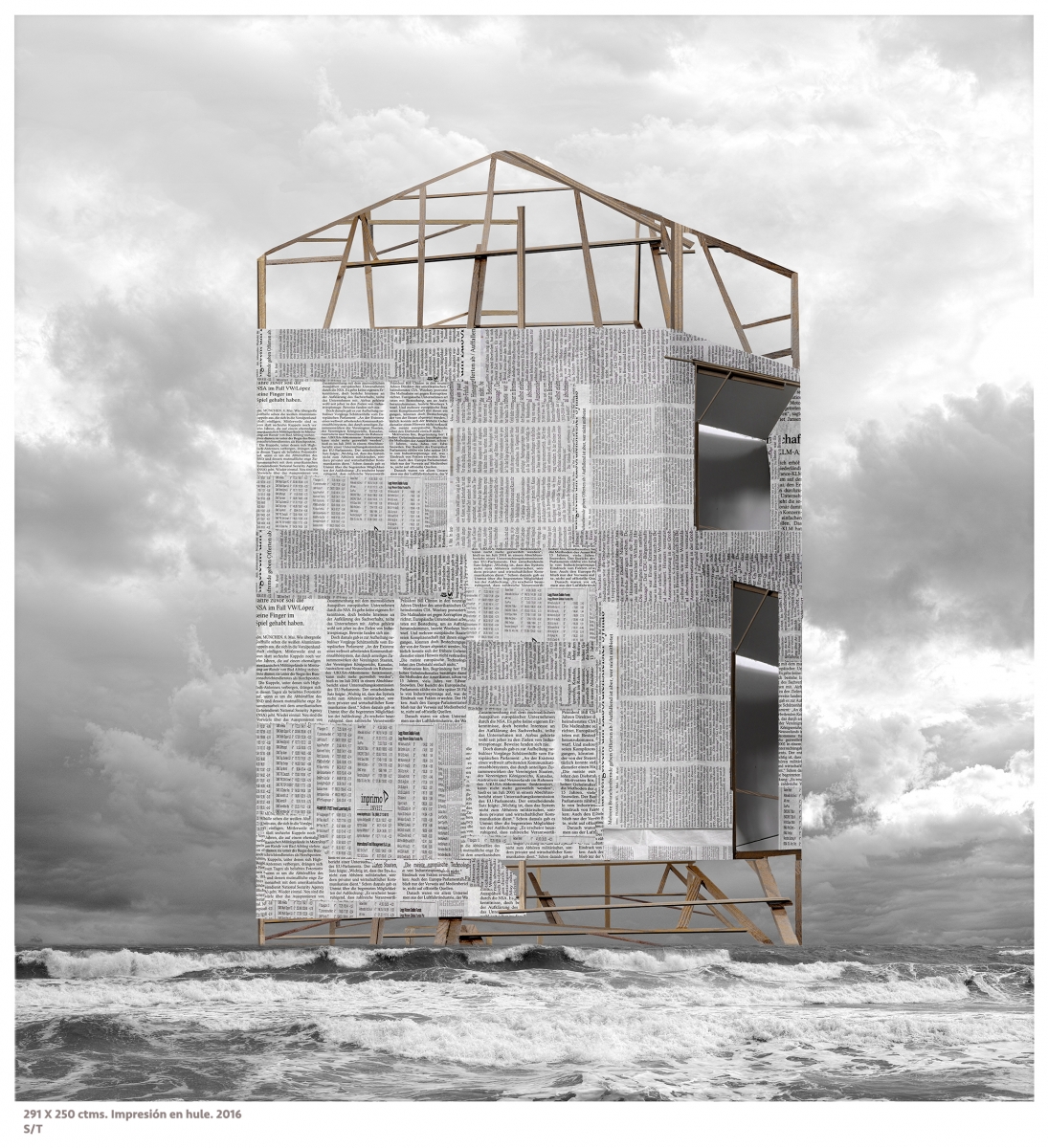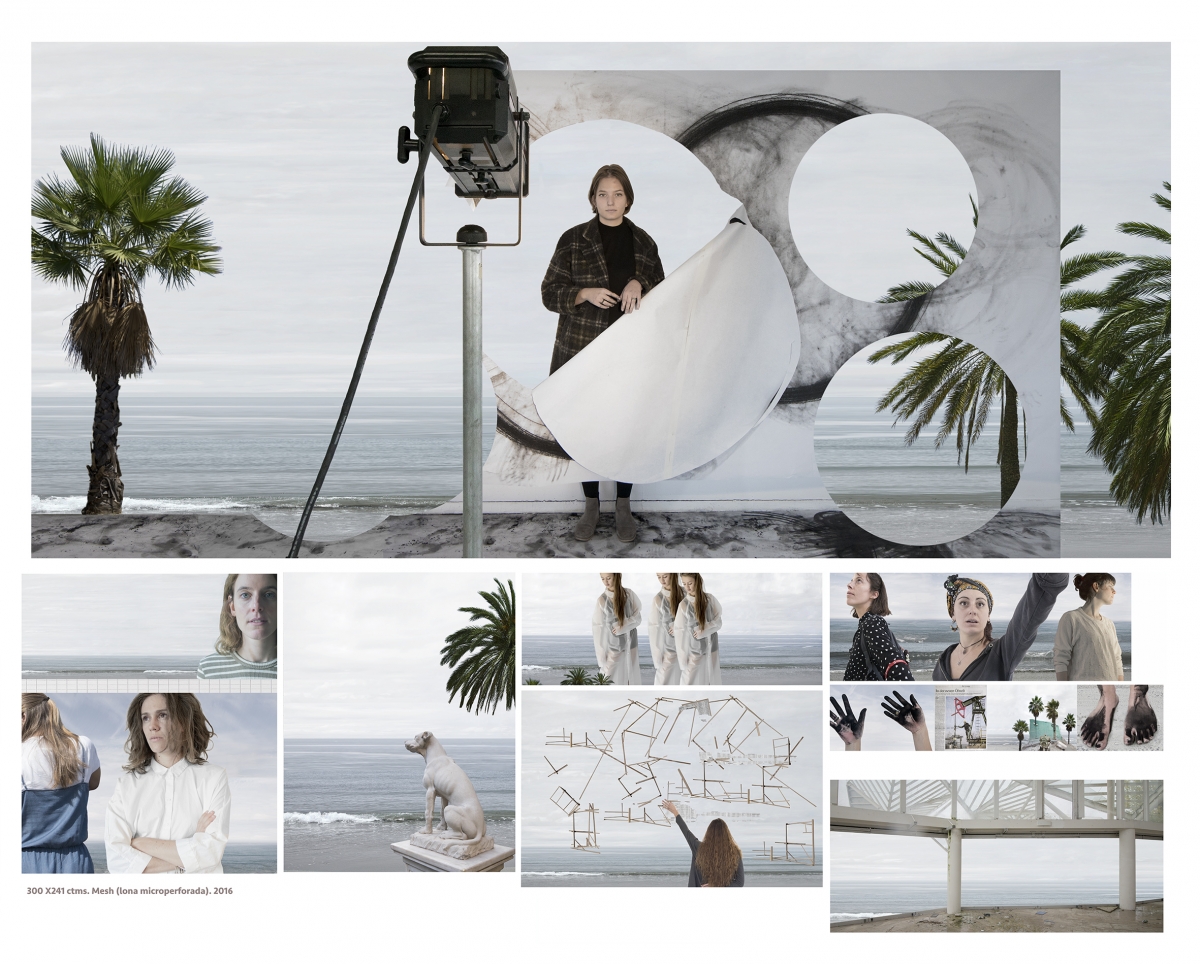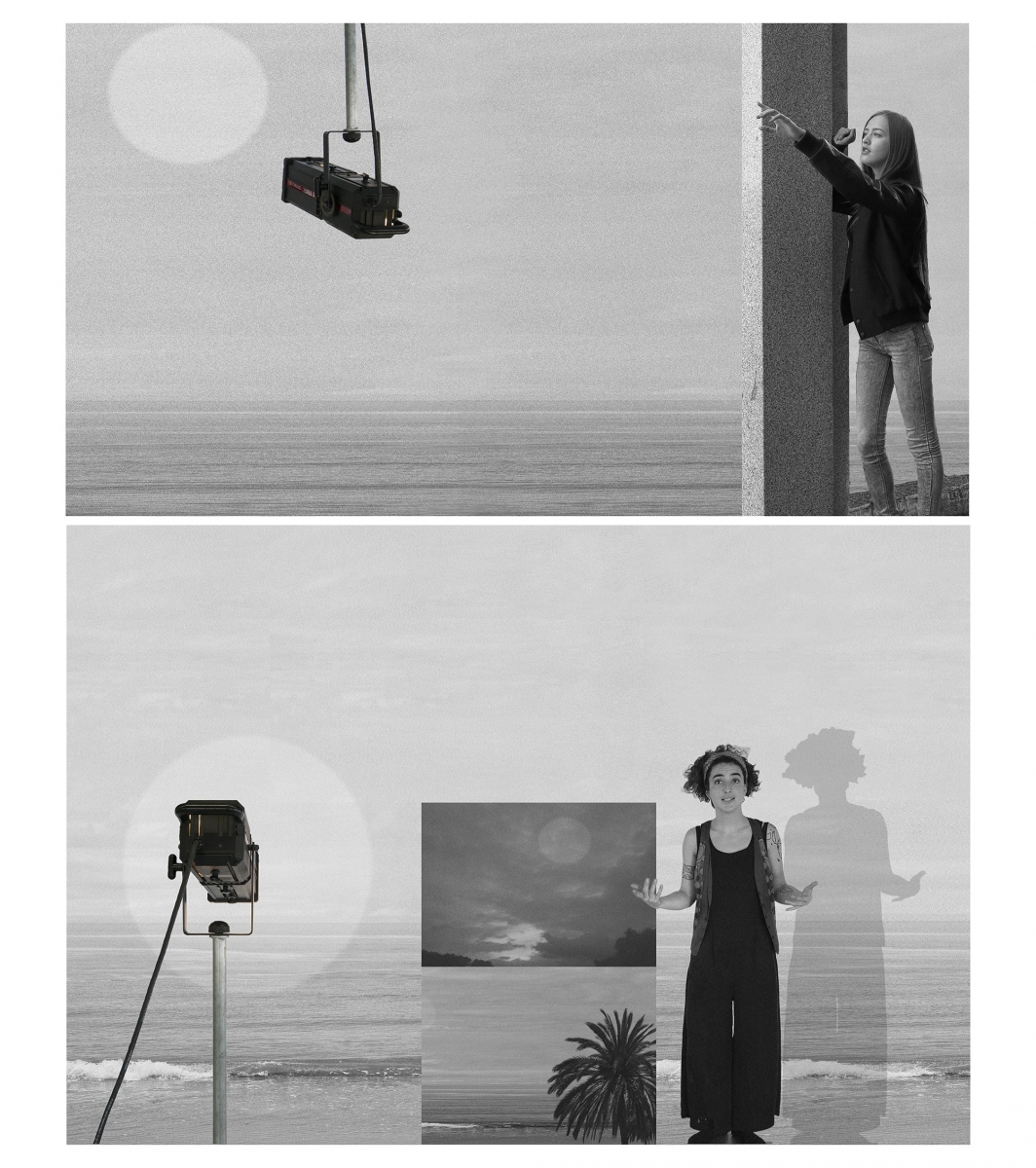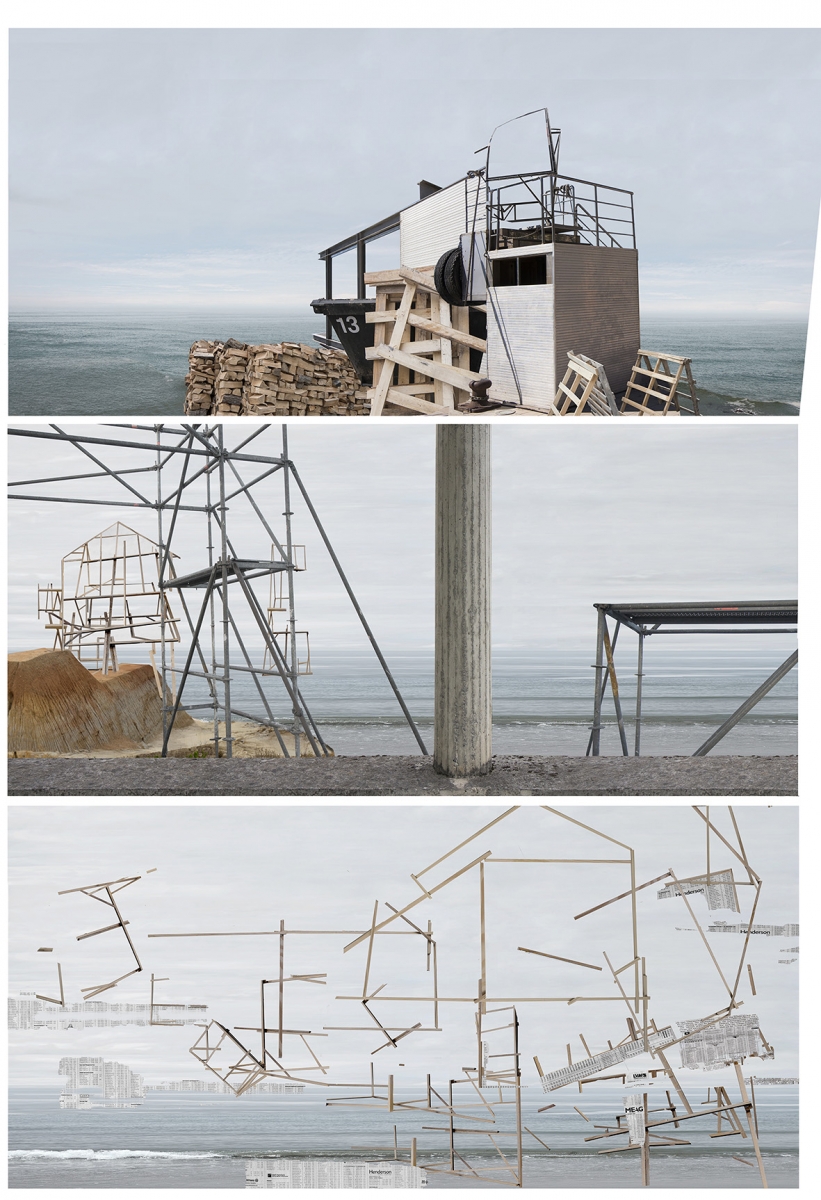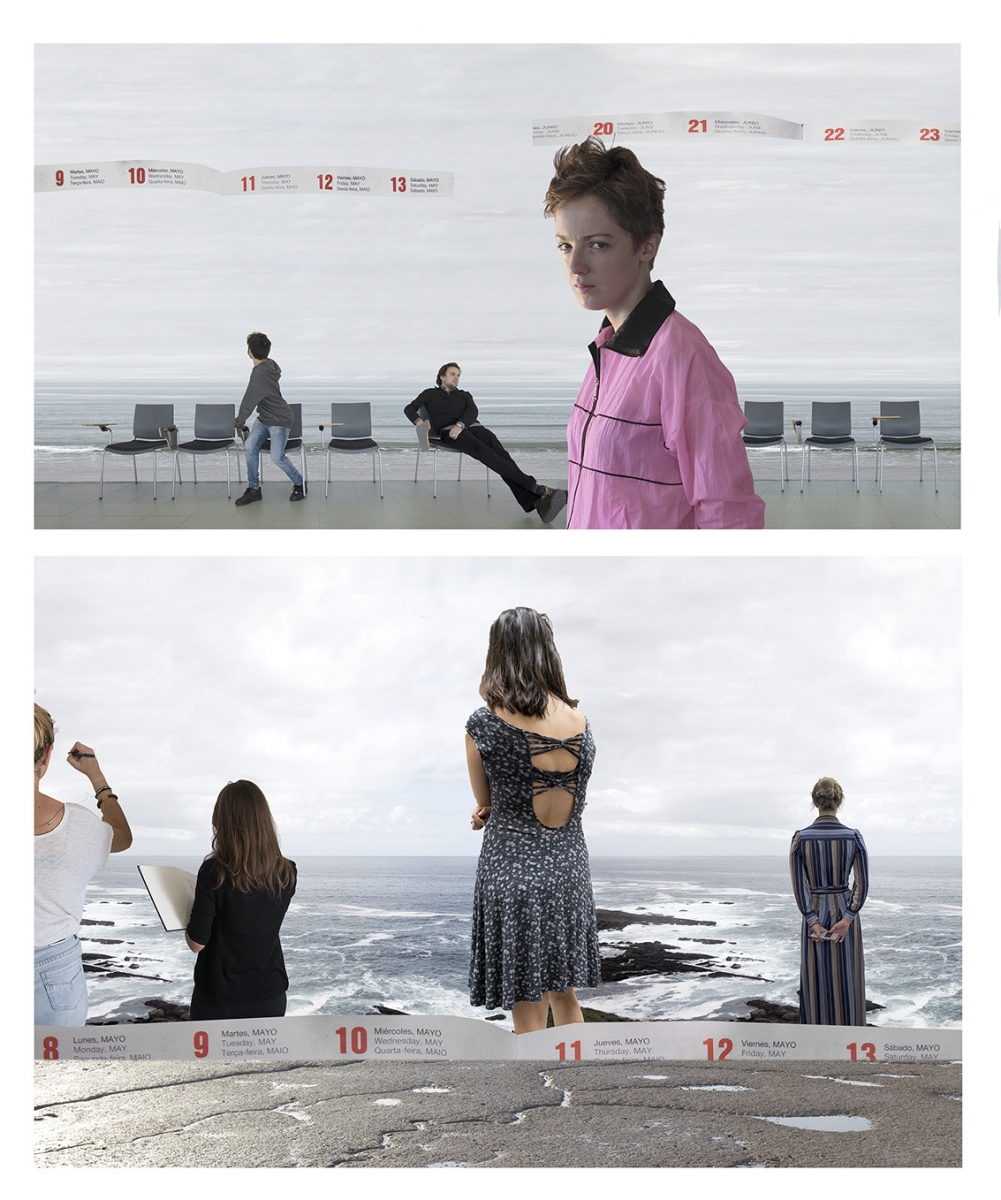*
Toni Simó Mulet, University of Murcia, Spain.
Introduction
Mona Hatoum began her artistic career using performance and video in the 80’s, focusing with great intensity on the idea of the body and performance action. From the beginning of the 1990s, her artistic work was developed through large-scale installations that aim to engage the viewer in the contradictory emotions of desire and repulsion, fear and fascination. In her sculptural installations, Mona Hatoum has used the resource of the transformation of the familiar and the everyday (household objects such as chairs, tables, kitchen utensils, etc.) into something strange, threatening and dangerous. Even the human body becomes unusual in works like Corps étranger (1994) or Deep Throat (1996), installations using endoscopic paths through the “interior landscape” of the artist’s own body. In Homebound (2000) and Sous Tension (1999) Hatoum uses a somewhat surreal and threatening domestic dramatization, to catch the viewer in their perceptual and corporal journey through the space of the installation. The evolution of the artistic work of Hatoum lies in the spatial extension of the body within its limits, borders and spaces of collision, creating installations with an emphasis on the spatial construction caused by the effect of the displacement and the movements of the body in them. A body which in turn is the personal element of her autobiography and the material with which it identifies, the subaltern and the cartographic exile of her own autobiography, her status as a female Palestinian artist.
The ability to recreate and question cultural and political geographic spaces has become an invariable in her work, from the personal condition of exile and the reference to transportation and new ways of relating spatially, objectively and culturally in the passage, transition and movement of the body, giving a broad perspective of a body located between the interstitial of the artistic performance. Exodus, displacement, and instability are inescapable concepts in the life and work of Hatoum, and according to Kimberly Lamm, “the only real consistency in Hatoum’s work is her destabilization of ‘home’” (Lamm, 2004: 2).
Performative geographies
The work of Mona Hatoum represents a resistance to cartographies of power based on its commitment to the trauma of exile. It is for this reason, that this text approaches the work of Mona Hatoum from the point of view of the “performative/relational spatial turn”, which breaks with Kantian absolute space, revealing a deeper shift with poststructuralist and, above all, performative approaches, appearing in the work of authors like David Harvey (1990) Doreen Massey (1992), with the explicit article “A relational politics of the spatial” of her work “For space” (2005).
In this respect, it is worth underlining Phil Hubbard’s words about the “performative turn of space” and the development of the geographic conditions latent in politics, cultural of each artificially delineated space, where a new conceptualization of urban space has been developed which challenges its conceptualization as “given reality”. A new relational and performative ontology of space is proposed:
(…) Emerging as reactions to the absolute or ‘empirico-physical conception of spatiality that informed most geographical inquiry at that time. This suggested that the world was essentialy a blank canvas, and, rather than playing an active role in shaping social life, formed a surface on which social relations were played out. (2005: 42).
The genealogy of the evolution of space and especially public space is well known and studied by Hannah Arendt or Jürgen Habermas, who have debated these issues. But they can not be seen in isolation without a consideration of space as a whole, and their evolution can not be understood without the contribution of Lefebvre, who questions the objectivity and totalization of studies on spatiality. Lefebvre contributes in a significant way to the “spatial turn”, and his words on spatiality must be remembered here to signify the paradigmatic shift in spatial uses:
Space is not a scientific object removed from ideology or politics; it has always been political and strategic (…) Space has been shaped and molded from historical and natural elements; but this has been a political process. Space is both political and ideological. (…) It is a product literally filled with ideologies (1976: 31).
The “spatial and performative turn” makes it clear that space can no longer be taken as something inert or an objective matrix and an empty container to design from nothing, but rather it behaves like something fluid, in constant motion and conditioned as Thrift points out: “by processes of circulation within and between particular spaces. The world is made up of all kinds of things brought in to relation with one another by this universe of spaces through a continuous and largely involuntary process” (2006: 139). Also, starting from Michel Foucault, new theories on space, power and biopolitics are proposed (Crampton and Elden, 2007). Also, Gilles Deleuze and Félix Guattari, revisiting Foucault, pose a reconsideration of territory, geography and space in their book “Mille plateaux”. In contemporary art, these theories were collected by the “situationists” and their “psychogeographic detournament” and by new ways of producing and questioning space, as for example Land Art. Many names have been attributed to the “cartographic impulse” and the “spatial/performative turn” in works of contemporary art that relate spaces, maps and artistic performativity, such as “psychogeography”, “locative media”, “experimental geographies”, “site-specific art”, “new Genre of public art” or “critical cartography”, etc.
The work of Mona Hatoum, to which I want to refer and underline, belongs to this state of affairs. In Mona Hatoum’s artistic production we find two elements that define her approach to the fact of making contemporary art; on the one hand the use of the body, the autobiography of her own body that is marked by trauma, and on the other hand, the use of spatiality, geography and maps as a measure to perform the movements of the body, and to put in the foreground the autobiographical exile. From her first performances, where she used the body as a device in space, to her work with the geographies and maps recreated from her experience, Mona Hatoum has used geographic and performative spatiality to develop the potentialities of her work.
The installations and sculptural objects of Mona Hatoum are defined based on spatiality, the measurement and the displacement of the body, and are impregnated by a sense of dislocation and disorientation, which leans towards the grotesque. Hatoum frequently redeems the uprooting of familiar and strange places, which occurs in the displacement, in the exile and through the body and their affects. They become a dislocation of memory. The fears and defamiliarizations of transit spaces and unearthed everyday objects, irreconcilable with their basic function they are transformed into something different, something unstable and precarious as in her work Present Tense (1996). The materials used in her installations such as hair, nails, stains, blood, etc., remind us of the relation between the body and the performativity of space; since her work is associated with the fabric of space and the body. And is directly linked to her own condition of nomadism, passage and transit between three territorial political entities, Palestine, Lebanon and Great Britain. But it is not only her status as an exiled Palestinian woman, which has repercussions on her work. Her work is developed challenging the stereotypes of reality, as she says: “In a very general sense I want to create a situation where reality itself becomes a questionable point (…) A kind of self-examination and an examination of the power structures that control us” (Antoni, 1998). Her works confront issues of power and domination, subverting metaphors with references to the political context and tensions today, as for example her works Do not Smile you’re in Camera (1980) and Under Siege (1992). This way of approaching reality corresponds to the idea of exile that Edward Said exposes as a “counterpoint of memory”. The grotesque, surrealist subversion of spaces, objects, materials, and bodies in Mona Hatoum’s work evoke Said’s definition of exile:
(…) Life of exile moves according to a different calendar, and is less seasonal and settled than life at home. Exile is life led outside habitual order. It is nomadic, decentred, contrapuntal; but no sooner does one get accustomed to it than its unsettling force erupts anew (2000: 149).
As Said comments, “An abiding locale is no longer possible in the world of Mona Hatoum’s art” (2011: 108). Her adherence to the counterpoint, the contradictory and at the same time to the constant flow and interrupted passage without a fixed place to shelter or to look, make up the obsession of Mona Hatoum through the spatial cartographies, the abyss of the borders, and the spatial, political and cultural boundaries of maps. In this way, her works that are “prone to multifocalisation: grids and maps” (Assche van, 2016: 97) draws on these two types of representation: grids and maps. Geography thus becomes commonplace in Hatoum’s work, where borders, boundaries, and edges generate significant material to produce dislocation, the disjunction of our stable and balanced interpretation of reality, as Hatoum has understood it in her cartographic proposals.
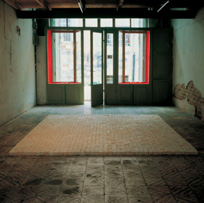
Fig. 1. Present Tense, Mona Hatoum, 1996. Source: http://www.sharjahart.org.
Maps are instruments of power and serve to reorganize the flow, and borders serve to control the movements of people, and so it develops in her work Present Tense (1996). Within the artistic production of Hatoum, it is one of the first works to collapse the code and the form of the network and the map in the artistic production of Hatoum. Present Tense (1996) (fig. 1) is an installation consisting of a network of 2,200 blocks of square bars of olive oil soap, traditional in the city of Nablus, on which are embedded tiny red glass beads to form the territorial divisions of Palestine and Israel. It is the Oslo Agreement version of the Palestine partition, which Hatoum found when she arrived in East Jerusalem to stay at the Anadiel Gallery in 1996. It is a subversive act in reaction to violence, power and discrimination, which is executed in the political layout of the map. It is a “counter-geography”, as Irit Rogoff would say (2000).
The materials used are in opposition to the idea of power and submission that maps communicate, to its political mandate and to its totalizing symbology, as Sheena Wagstaff points out “(…) maps are the symbol of conquest: the ‘cartographic gaze’ is interpreted as wielding immense power, held by those unnamed individuals who have drawn and re-drawn maps throughout history (…)” (Hatoum, Said and Wagstaff, 2000: 39).
Olive oil soap, apart from being an element of Palestinian identity, conveys an idea of vulnerability, transience and destabilization over the figure it represents. It neutralizes any political idea of imposition and reverses the meaning of the Oslo Agreement about an agreement for peace, and rather the territory dissolves and becomes slippery. The red glass beads add an ornamental and provisional meaning, nothing established, nothing definitively configured. The body is also present in her cartographies, through the idea of cleanliness of the soap, and the pearls of a necklace. As it is also present in the fragrance that the soap distils in the whole space of the installation, which also incorporates the bodies of the spectators. The inclusion of body objects and everyday life intercepts the meaningful power and abstraction of maps. It is in her cartographic works when her autobiography and the idea of the spatiality of the diaspora of the body meet, as Irit Rogoff points out:
The extreme ungroundedness produced by Hatoum’s remade maps is slightly stabilized through the eflect of the smells and tastes of everyday life which continue unabated, cross back and forth between populations otherwise in conflict and circulate in diasporic culture (2000: 90).
Present Tense, evokes inequality and destabilization of borders. The base of the map is made up of soap bars, which are showing cracks and the islands of cartography. Boundaries are places of passage and spatial performativity of the body, and in Hatoum’s work an idea of re-construction, re-positioning and constant movement of the body in space is displayed, rather than an uprooting based on the unhomely. This is how Elena Tzelepis interprets it:
It provides a wide-ranging perspective of a situated and interstitial body in performance, whereby a politics of location with no fixed points and no road-signs is intertwined with a politics of relationality with no centered identities. This is about a sensibility and subjectivity attuned to a living cartography of passages (2013: 170).
The sense of belonging is ambiguous; it is not an identity and it activates a “disjunctive memory” that is constantly recomposed in the work of Hatoum, to negotiate with the distances, the affects and the boundaries between the home and the changing world. The work of Mona Hatoum questions the way in which a postcolonial situation and the performativity of genre can be approached within contemporary art. The work of Hatoum questions our security and certainties of the territory that we inhabit, and for that reason it activates a “(…) deterritorialized and discomforting performativity through which borders and bodies are displaced” (Tzelepis, 2013: 170).

Fig. 2. Continental Drift, Mona Hatoum, 2000. Source: Http://www.orbit.zkm.de.
Another work of Hatoum using the map as a model is Continental Drift (2000) (fig. 2). It is another abstract representation of how the world might look. It is a horizontal map of the world in transparent plastic, seen from the North Pole with metal filings covering the seas. A magnetized bar like a hand of a clock moves beneath, creating a wave like a tide, and its path is disfiguring and altering the continents. This is another map with unstable borders, where the territory presents itself as unstable, shifting. This is another cartography in which the movement and changing breaks down geographical boundaries, as a representation of the world through the drift.
Hatoum exposes an intrinsic instability attached to cartography through the flow, thus emulating the cartographic formation of our present world in accordance with power. This creation makes us experience a world where fixed maps, boundaries and identities are threatened by the waves of political power. Continental Drift (2000), and follows in some way, Deleuze’s definitions of geography and maps, as a cartography marked by turning points, and seen and felt as emotional intensities (Conley, 1998: 134). The suggestion that Hatoum proposes to us with this map is the possibility that an invisible force can change and distort our known perception of the world and that our existence is at the mercy of the hidden games of power. She herself states: “It looked both mesmerizing and at the same time there was a suggestion of a kind of malevolent hidden force lurking underneath the surface” (2010).

Fig. 3. 3-D Cities, Mona Hatoum, 2008-2009. Source: https://spacefiction.wordpress.com.
Another example of Hatoum’s work on geography and disputed territories is the installation 3-D Cities (2008-2009), (fig. 3). These are three printed maps of the current cities of Beirut, Baghdad and Kabul, with geometric cuts forming depressions and elevations on paper. The maps show three cities geographically connected by war and destruction, with politically strategic zones. 3-D Cities is an interweaved representation of space-time, of geographies of these cities, incorporating recent collective memories of dysfunctional cities, interrupted in their daily evolution due to violence, to the separation of their communities and to the marks and physical wounds that they have suffered in recent wars. The three cities are connected in the collective memory by the three bombings that Kabul suffered in 2001, Baghdad in 2003 and Beirut in 2006. There are three fissures representing the marks of the bombs and four circles projected outwards on each map indicating the will of reconstruction of the cities (Assche van, 2016: 112). Mona Hatoum displays the maps in an installation emulating the layout of a military command center with its three minimalist tables arranged in an arch. The “strategic” maps, however, show seismic signs that make our perception of cities unrecognizable, their spaces appear slipped and decomposed. Mona Hatoum converts a simple city map, which serves to orient and locate its monuments, its streets and its characteristic spaces into a heterotopic representation: “Interrogating our position, our established procedures of recognition and definitions, the artist draws us into an alternative critical heterotopic space” (Ferrer & Val, 2014: 25).
Also the artwork Hot Spot (2009) interrogates the notions of “limits” through the representation of a globe in the form of a cage, two and a half meters in diameter and leaning on the same angle as the earth. The use of neon to delineate the contours of the world on its surface makes the installation vibrate with intense energy, in a luminous red glow that warns us of a representation of the world in a state of permanent alertness. The red neon indicates danger and also that all border areas are apparently on “hot” political points. As Hatoum comments:
It’s actually buzzes with a very dangerous energy, the idea behind this work, for me it was that hot pots or spots of conflict these days are not limited to certain areas of the world, but it feels like the whole world is caught up in conflict and unrest (2010).
Affective displacements
Since the 1980s the cultural policies of art and literature have been shaped by what has been called the “affective turn”, where art can no longer be seen only under the program of meaning and message. The new forms of communication incorporate new forms of “social and cultural affect” that have the capacity to generate and transmit affection, or to invoke the spectator in a particular, transforming way (Alphen van, 2008: 22). Van Alphen proposes the reflections of the artist Félix González-Torres on the sociocultural situation in the 90’s, and the way of approaching artistic thinking from other views different from the discursive idea, the didactic and informative significance of the work of art. In this way, Félix González-Torres asserts that we have an explosion of information, but that its meaning does not interfere in our everyday life. González-Torres advocates a more personal and subjective art that arises from personal experience (Alphen van, 2008: 21). The practices of contemporary art, therefore, have the capacity to question reality from an affective approach, where the personal voice and the affective experience can develop new forms of contestation of the political, where the political is not measured by the intensity of their messages but by the intensity of their “affects” (Brea, 2010).
But what really is the affect? Theories of the affect are used in many different ways and the first ideas about the affect are associated with feeling and emotion, with hatred, sadness, happiness, love, etc. But theorists like S. Tomkins interpret the affect as something “pre-subjective” and “inhuman” (Leys, 2011: 437), where affection processes occur as a survival instinct reaction, in which the individual pursues no intentionality or meaning in their actions. These are presented as automatic bodily reactions. The approach of S. Tomkins is that our basic emotions react blindly to objects without prior knowledge or preconceived feeling. A step further is represented by authors such as Brian Massumi (2015) who takes Deleuze’s deconstructive theories in his approach to the affect, and admits that emotion is only a part of affection and that in reality they are two different things. For Massumi, the affect is “to think with the body”; it is an intensity that follows a logic different from that of emotion (Leys, 2011: 442). The affect is not a personal emotion it is social and pre-personal.
Massumi emphasizes that affection rather than a discipline of study is a dimension of life. In this way, insofar as the political is a dimension of everyday life, we can somehow compare the “political” and the “affect” that will necessarily have a domain of overlap, in which they share a certain space, interacting one with the other. Massumi starts from the idea of Spinoza in the idea of the affect of the body, in terms of its capacity to affect or to be affected. The affects are basically forms of connection, with others and with other situations. For Massumi, as for Deleuze, the affect is an intensity in which the body is in constant movement, in passage, where the potentialities of our interaction with the surrounding context are generated, as he himself defines it: “Affect is simply a body movement looked at from the point of view of its potential –its capacity to come to be, or better, to come to do” (2015: 108).
It is here, where we can interpret the work of Mona Hatoum from the point of view of the propositions we have alluded to about the theories of the affect. There are two crucial elements in the work of Mona Hatoum that we have already highlighted in this text. The first is the idea of body and performance, and the second is space, map, grid or cartography. On these two elements, Hatoum develops in her works of art a space-time form of personal and social construction. Drawing on body and performance, Hatoum starts from the feminist practice of Body Art in the 70s and 80s, where the body, within a minimalist and conceptual approach, is able to make a complex review and criticism about her autobiographical situation, as an Arab woman in exile. We could point out the work Over My Dead Body (1988), where Hatoum shows a photograph of her face in profile, with a toy soldier dangerously balanced on her nose, as the involvement of the body in a “political and spatial” becoming. And that will point to an evolution towards a “corporeal cartography” as defined by Hiba Ali (2014). Mona Hatoum questions the reality of the human condition from the idea of the body in motion, within the autobiographical, as well as within the spatial socio-political context.
Hatoum uses the body and its affects to tensely relate the opposite emotional experiences, such as desire and repulsion, security and fear, instability and power, the different emotions of belonging and uprooting, exile and home, creating thus, “states of being” (Mikdadi, 2010) in a constant flow. Hatoum expresses her corporal affects with the socio-political environment with the body in movement, through a “performance of the body”. And it could be compared to what Massumi assumes as the expression of the affect: “(…) affect is thinking bodily –consciously but vaguely. In the sense that is not yet a thought. It’s a movement of thought, or a thinking movement.” (2015: 109).
Hatoum incorporates the performative body in her installations, involving the viewer in the progress and spatial development of her work, as in the case of Map (1999). It is a cartographic representation of the world made with glass marbles arranged on the ground without holding. The natural geographical contours of continents are clearly distinguished but not the political boundaries. The spectator, when participating in the installation space, can alter the continents with the movements of glass marbles, destabilizing the contours and borders of the world. Hatoum describes this installation in this way: “so unstable that even the geographical delineation of the continents cannot be fixed, since the simple movement of those walking across the floor will shift parts of it and threaten to destroy it” (Giudice, 2016: 34).
Following Deleuze and Massumi, the work of Hatoum works with the affectivities of the body and its encounter with the event in a concrete space-time. Hatoum transforms the linguistic and rhetorical meaning of her works, making an ironic play on their titles to disarticulate and defamiliarize its literal meaning, as in the work Present Tense (1996) or Hot Spot (2009). Where “tense” also means the tension of violence in Palestine and where the hot spots are all over the globe, not in a single one. With this rhetorical operation Hatoum affectively incorporates the response of the viewer to her installations.
Deleuze’s proposition (2005) of “the look at cartography”, of maps and space from the intensities produced by “affects” and by the displacement of bodies, can be seen through the artistic procedures of Mona Hatoum; Through their diasporic displacements of the body in the political cartography that is subverted in her works. The maps also have intensities that are the basis of “affect” according to Deleuze and Massumi, and as such, cartography is open to these intensive turning points, such as those proposed by Hatoum in 3D Cities (2008-2009), or Continental Drift (2000). Hatoum’s cartographic constructions replicate the body’s performative perception, and together with the installations seek new territories where it is possible to invest and rethink new affective and perceptive spaces. The maps of Hatoum are, as Deleuze comments, new intensive territories and new affective maps:
Maps should not be understood only in extension, in relation to a space constructed by trajectories, there are also maps of intensity, that are concerned with what fills space, what subtends the trajectory (…) A list or constellation of affects, an intensive map, is a becoming (Crang and Thrift, 2002: 21).
For Deleuze space is a dimension, his “geophilosophy” is based on the creation of new conceptual spaces, where the map as the rhizome, can be adapted to a biography of the body and its memory, which is nourished by the intensities of affect, as in the work of Mona Hatoum. The map as the Rhizome “(…) is open and connectable in all of its dimensions; it is detachable, reversible, susceptible to constant modification. It can be torn, reversed, adapted, to any kind of mounting, reworked by an individual, group, or social formation” (Deleuze and Guattari, 2004: 13-14).
On the other hand, Jill Bennett (2005) comments about non-representational strategies of art and focuses on the affective operations of contemporary art. In a different way, she places affection in the work of art, not only in the processes that involve the artists in conceiving their work, but in the response produced in the spectator by the work, in the encounter and experience with the work of art. According to Bennett in this encounter between the work of art and the spectator a “embodied sensation” and a “body perception” is produced. Thus, Bennett comments on the Hatoum’s work Homebound (2000) that “facilitates the carryover of an affective response from one piece to another; Hatoum’s incarcerative space engenders a certain bodily response (…) (in which) one is effectively assisted in a process of embodied perception” (Lionis, 2014: 79). The viewer empathizes so emotionally with space and symbolism proposed by Hatoum at this installation. This work deals with issues of displacement and imprisonment of the body in the domestic space, where electrified household objects appear along with an electrified metal fence referring to Hatoum’s autobiographical traumatic experience. The viewer’s detachment from the installation space, the recourse to the speculation of meanings and to the symbolic and spatial contradictions generates her work.
Bennett argues that much of today’s contemporary art uses trauma as representation based on the testimony of the transmission of traumatic events conditioned by globalization and the media. And that these are also a vehicle to convey an affective impact on works of art dealing with traumatic events, such as the work of Mona Hatoum. Thus, through affect and what Bennett calls “seeing feeling” Mona Hatoum’s work establishes an empathic connection with the viewers, through the experiential encounter with her work, not as communication but as a “transductive encounter”, that is, with the ability to transmit the traumatic affect through the spaces of memory, identity and place that the artist symbolizes in the installations. This happens through a process of empathic connection of the spectators to the victims of the traumatic event (Bennett, 2005: 7).
Hatoum’s work is suffused with topics like “politics and the human body (…) war, violence exile, imperialism and racism” (Zegher de, 2012: 117). But it is also related to the disjunction of space, with spatial decontextualization showing in many of her works, in addition to the maps, as Mesaures of Distance (1999) Roadworks (1985) or the work Corps étranger (1994). In the latter she makes a spatial examination of her body through its interior and exterior with a camera, like a map: “If the body were to be regarded as a topographical map, one would find that its nation or selfhood is delineated by the parameters of its epidermis” (Tambeck, 2005: 60). Hatoum speaks of social control and political diaspora of the body in exile. It is perhaps in this work where one could speak of affect and the “encounter with the sign” that Bennett speaks of following Deleuze, and the “incarnate or embodied feeling”. The decontextualization of the body and space takes us to her decontextualized discourse of unstable and traumatic spaces. These have generated almost all of her work, from the diaspora and special attention to areas of conflict in the Mediterranean and their representations, which are subject to the biography and work of Mona Hatoum.
References
Ali, H. (2014). “Profile of the artist. Mona Hatoum”. The Seen, Chicago’s International Online Journal. Available online: http://theseenjournal.org/art-seen-international/profile-artist-mona-hatoum/. Retrieved June 15, 2016.
Alphen van, E. (2008). “Affective operations of art and literatura”. Res: Anthropology and Aesthetics, 53(1), pp. 20-30.
Antoni, J., & Hatoum, M. (1998). “Interview with Mona Hatoum”. Bomb, (63), pp. 54-61.
Assche van, C., (ed.) (2016). Mona Hatoum. London: Tate Gallery Publishing.
Bennett, J. (2005). Empathic vision: Affect, trauma, and contemporary art. Stanford, Calif: Stanford University Press.
Brea, J. L. (2010). “Retóricas de la resistencia: una introducción”. Estudios Visuales, 7, pp. 8-13.
Conley, T. (1998). “Mapping in the folds: Deleuze Cartographe”. Discourse, 20(3), pp. 123-138.
Crampton, J. W., & Elden, S. (2007). Space, knowledge and power: Foucault and geography. London: Ashgate.
Crang, M., & Thrift, N. J. (2002). Thinking space. London: Taylor & Francis.
Deleuze, G., & Guattari, F. (2004). A thousand plateaus: Capitalism and schizophrenia. London: Continuum.
Deleuze, G. (2005). Cinema 1: The movement-image. London: Continuum.
Ferrer, A. M. G., & Val, N. J. D. (2014). Critical cartography of art and visuality in the global age. Cambridge: Cambridge Scholars Publisher.
Giudice, C. (2016). “Contemporary art as a visual expression of power”. Documenti geografici, 1, pp. 31-45.
Habib, R. A. (2014). “Visceral voice”. Canvas Magazine, March/April, pp. 100-101.
Harvey, D. (1990). “Between space and time: reflections on the geographical imagination”. Annals of the Association of American Geographers, 80(3), pp. 418-434.
Hatoum, M. (2010). “Mappings, map marathon exhibition”. Londres: Serpentine Galleries. Available online: https://vimeo.com/24541176. Retrieved July 4, 2016.
Hatoum, M., Said, E. W. & Wagstaff, S. (2000). Mona Hatoum: the entire world as a foreign land. London: Tate Gallery Publishing.
Hubbard, P. (2005). “Space/place”. In Atkinson, D. et al. (eds). Cultural geography: a critical dictionary of key concepts, London: I. B. Tauris, 6, pp. 41-48.
Lamm, K. (2004). “Seeing feminism in exile; the imaginary maps of Mona Hatoum”. Michigan Feminist Studies, 18, pp. 1-13.
Lefebvre, H. (1976). “Reflections on the politics of space”. Antipode 8(2), pp. 30-37.
Leys, R. (2011). “The turn to affect: a critique”. Critical Inquiry, 37(3), pp. 434-472.
Lionis, C. A. (2014). “Past not yet passed, postmemory in the work of Mona Hatoum”. Social Text, 32 pp. 77-93.
Massey, D. (1992). “Politics and space/time”. New Left Review, 196, pp. 65-84.
Massey, D. (2005). For space. London: Sage Publications.
Massumi, B. (2015). Politics of affect. London: Wiley.
Mikdadi, S. (2010). “The states of being in Mona Hatoum’s artwork”. Darat al Funun, The Khalid Shoman Foundation. Available online: http://thekhalidshomanfoundation.org/main/activit/curentl/mona_hatoum/5.htm. Retrieved June 3, 2016.
Rogoff, I. (2000). Terra infirma: geography’s visual culture. London: Routledge.
Said, E. (2000). Reflections on Exile and Other Essays: Harvard University Press.
Said, E. (2011). “The art of displacement: Mona Hatoum’s logic of irreconcilables”. Quaderns de la Mediterrània, 15, pp. 107-110.
Tambeck, T. (2005). “Mona Hatoum’s corporeal xenology”. Thresholds, 29, pp. 59-62.
Thrift, N. (2006). “Space”. Theory. Culture & Society, 23(2-3), pp. 139-146.
Tzelepis, E. (2013). “Dis-placing the world: nomadic politics in Mona Hatoum’s living cartographies of passages”. The Greek Review of Social Research, 140, pp. 169-184.
Zegher de, C., (ed.) (2012). Mona Hatoum, projecció. Barcelona: Fundació Joan Miró.
* This paper is a revision of the chapter “Políticas espaciales en la obra de Mona Hatoum”. In Experiencias y manifestaciones Culturales de vanguardia, 2016, McGraw‐Hill Education.
